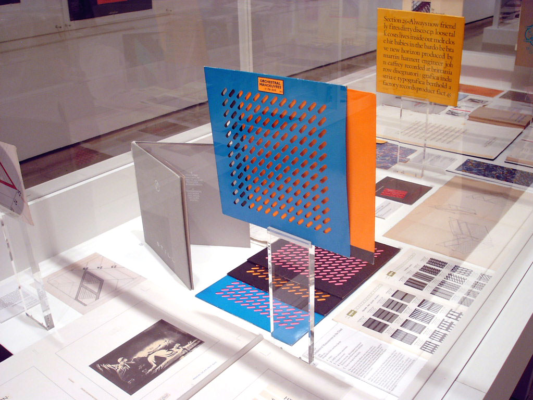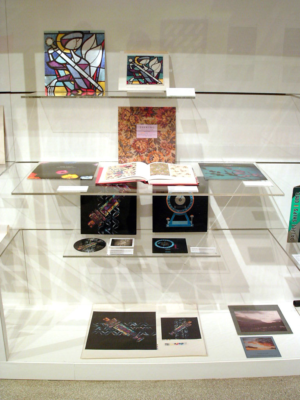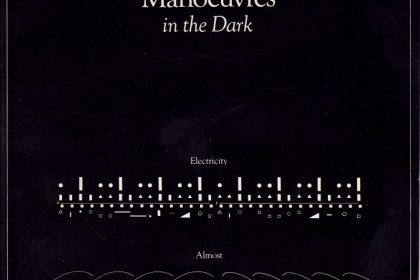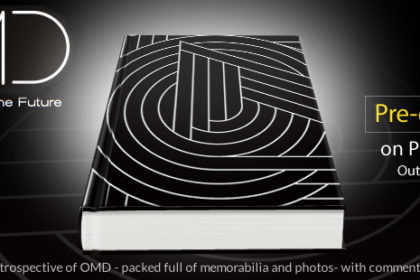The art of music…
Peter Saville remains perhaps one of the most well-known and influential designers in the music industry. An exhibition of his work has helped to reinforce this idea – and also helped redefined the public perception of OMD.
In 2003, the Design Museum in London featured The Peter Saville Show – a showcase of his work over the years from the Factory label onwards. One room was dedicated to his work in that early 80s period including Joy Division, New Order, Ultravox and OMD. Another room detailed Saville’s flirtation with the fashion design area and a third room covered more recent work for artists such as Pulp and Suede.
The main room probably succeeded the best in capturing your attention if you’re a fan of the likes of Joy Division and OMD. Far from being purely a display of record sleeves, the exhibition managed to reveal the sources and inspirations for many of Saville’s most well-known works – including the original metal sheet used for the sleeve of Joy Division’s ‘Love Will Tear Us Apart’.
OMD benefit greatly from this attention to detail and are given a generous amount of space in the exhibition. OMD’s debut single ‘Electricity’ is shown next to the avant-garde music score by Stockhausen that Saville revealed to Andy and Paul. Andy had mentioned that he and Paul had a similar shorthand style of music notation and the exhibition also features the original Letraset design that Saville had produced, transcribing Andy’s handwritten notes.
Other displays included a rare die-cut poster advertising the OMITD album as well as a potted history of the influence for the iconic lozenge design. It was designer Ben Kelly who originally suggested to Peter Saville the idea of using a perforated sheet steel for the sleeve design -an idea that Kelly had already used in his 1977 design for a boutique in London called Mr Howie. The display included the metal manufacturer’s catalogue displaying the original perforated design along with variations which were used on the ‘Red Frame/White Light’ sleeve. Interestingly, the exhibition included a rare die-cut version of the 7″ sleeve.
The Dazzle Ships era also received particular attention, including roughs for the stage design (along with photos of the finished stage set) and displays for all the singles. The flat plan for the album design was also included detailing the colour choices used for the final version. Perhaps one of the quirkiest exhibits is a parka which has the Dazzle Ships album design on the back of it. This was the brainchild of Belgian fashion designer Raf Simons who dedicated his Autumn/Winter men’s collection to Saville designs.
More information is featured in the book Designed by Peter Saville – a publication which covers his design work in detail and features illustrations and photos covering his whole career.













